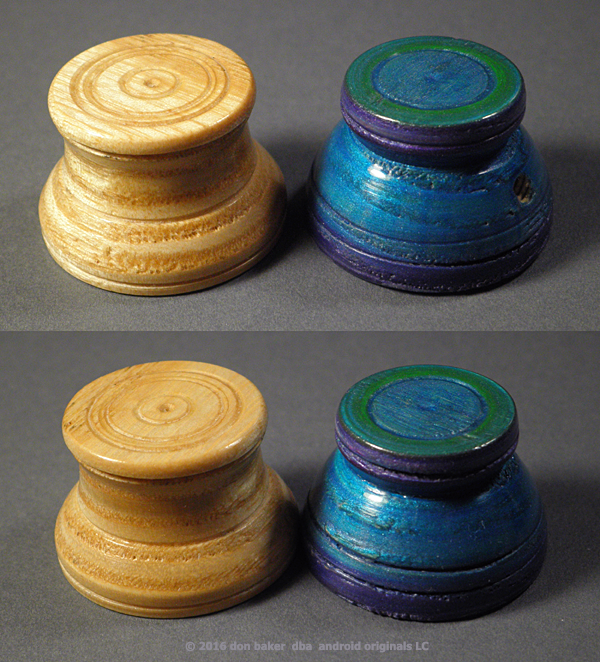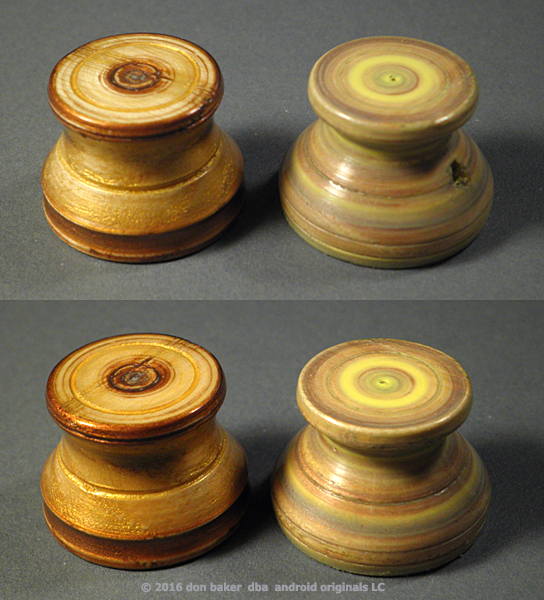Ash is a pale hardwood, which like Oak has hard layers alternating with softer, coarser, porous layers.
Knob 229, with no paint, and shoe polish finish over generic superglue (SG), clearly shows this structure. If water-based finish contacts the wood before SG seals it, the porous grain layers swell and raise, as they did in knobs 230 & 232. I chose to knock them back down, often by filing while the knob turned on a lathe. SG coated each layer of acrylic color to provide some hardness and depth. Each layer of acrylic was applied by finger-painting while the knob was turning on a wood lathe. Occasionally, a small brush may have been used. SG was added by a paper-towel wipe, tri-folded from about 3/4 inch to 1/4 inch, and then folded over again before wetting with SG, also while the knob was turning on a wood lathe.
I started with an acrylic metallic silver layer on 230, followed by Primary Blue acrylic w/ Light Green and Magenta trim. The acrylic layers were mixed by finger-painting with an acrylic float medium to thin and spread out the color, and applied to the knobs by finger. The last layers of SG on all the knobs were finally polished with abrasive fabric, then finished with Kiwi neutral shoe polish (KNSP). Knob 230 retains a small bit of iridescence from the underlying wood.
Knob 231 has a SG sealing coat, followed by coats of acrylic Inca Gold and Antique Copper, inter-layered with SG. It retains some iridescence from the underlying wood. In an attempt to fill the porous grain, an acrylic texture medium was applied first to knobe 232. Unfortunately, the porous grain rose. SG layers were interspersed with acrylic metallic gold, copper and Pearl White, as well as Yellow Flame. All acrylic layers were mixed by finger on the knob with float medium. Using the Pearl White results in a pastel effect, which eliminates much of the iridescence.
Knobs 231 & 232


